If you’ve ever wondered how to homeschool when life is in a low-level disarray for months on end and not one day looks exactly like another, well, pull up a chair and nestle in!
It’s the last week of July and I’ve just finished weeding half of my overgrown garden. (I rewarded myself with a shower and a small bowl of Trader Joe’s chocolate and vanilla bean swirl gelato–here’s your permission slip to get some.)
I dearly love an immaculate garden with neat paths and perfectly spaced rows. I am without a doubt the Mr. MacGregor type when it comes to gardening. But this year so far I have just settled for a garden.
The fence is up, but the gate has yet to be constructed and is being held together by bits of wire. My neatly mulched paths are taken over by a stubborn carpet of crabgrass. My cucumbers are already too heavy for the trellis and have tipped over, taking my dill with it and spreading itself wildly over the row of zinnias next door.
Yet, here I am harvesting banana peppers, cherry tomatoes, cucumbers and watching the watermelons swell.
Here is my garden, being a garden anyways–thriving right through chaos.
Thriving through chaos; I can’t think of a better caption for our 2022/2023 school year.
The Chaos
First, we moved in August. Not only did we move, but we downsized to a smaller house on ten acres, which due to over-optimistic planning, was also being renovated (by us) when we moved in. While we had plenty of space outside, the house would be what I call “shelf poor.” This translates into our stuff tottering in piles along walls and inside of corners. Then add construction tools, half-finished floors and a bevy of unforeseen mechanical repairs such as a septic back-up. And a burnt well pump. And things of that nature.

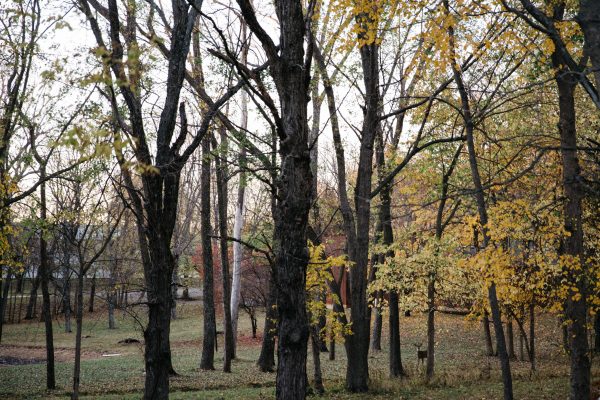
Then in September I found out that I was pregnant. I crawled my way through the first trimester only to have the devastating experience of being told our baby had no heartbeat the week I should have been easing into my second trimester. In the beginning of November I miscarried and ended up in the hospital (Some day I’ll tell you the whole story.) This took some time, as you can imagine, to recover from physically and emotionally.
During this time I was also driving my kids across town two days a week for an all-day co-op. It was a co-op that my oldest daughter loved and begged to keep attending after we moved. My other two didn’t want to miss out, so we let them enroll. The problem is we couldn’t get them in on the same day, so we sacrificed two precious days to driving and all the logistics that go with it.
So this meant we ended up with two co-op days that landed smack in the middle of our week, breaking up to of our best homeschooling days and decimating any semblance of weekly routine. It translated into two hours of interstate driving on back-to-back days. Yet it was such an important stabilizer for my girls in the transition that I simply sacrificed the time and did it. They loved the experience and though it was hard, I know it was a good thing. (We did move to a closer co-op in March which was a huge relief time-wise, but a little sad for my girls.)
To add to the changes, David started working a job job. In all of our years together he’s always operated his business from home, setting his own schedule. Between the commute and set hours, we lost a lot of our usual margins (not to mention the mental break of just knowing another grown-up is in the house!)
When we moved across town, we also crossed state lines from Kansas to Missouri. Kansas City straddles Kansas and Missouri so we are technically in the same city.
A small move over to Missouri meant a shift in record-keeping for our homeschool. You need to document 1000 learning hours and those hours have to be certain subjects done in specific locations. There really is no pretty way to track this.
So these were the things that set the tone for our year! We spent a lot of it surviving, adjusting and digging out.
Unschooling
Like the proliferation of cherry tomatoes in an overgrown July garden, my girls still grew and had plenty to show for it.
They had no problem directing their own learning during the haphazard pockets of time that we had throughout the week. Now that they’re older, they can do more complex things on their own and it’s really fun to watch.
My oldest (12) took fashion illustration and fashion history courses. She also learned how to use a vector design program to turn more of her drawings into coloring sheets and sold her first product (her holiday coloring pages are available here.)
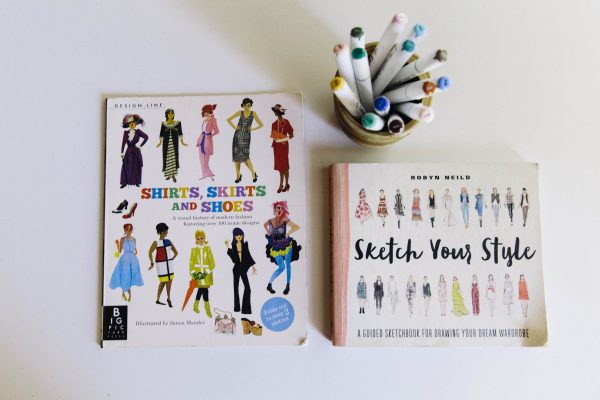
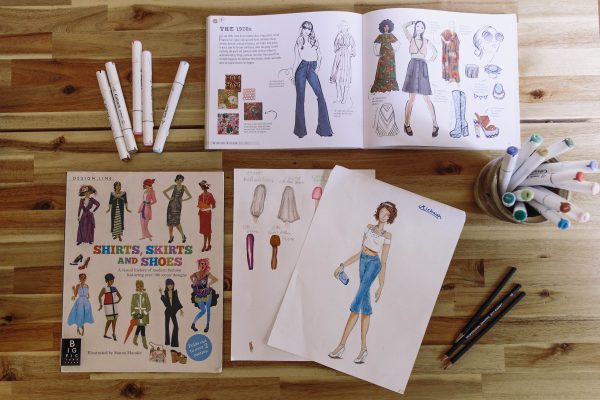
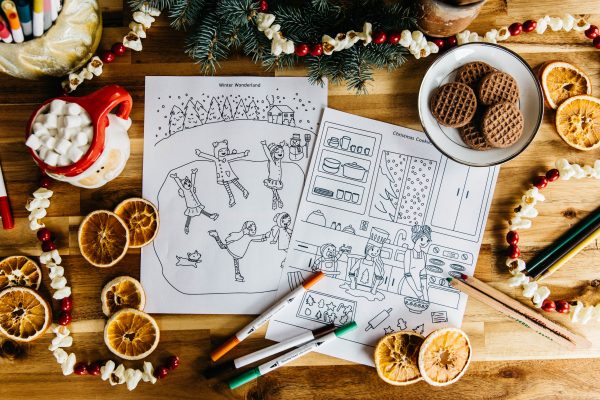
My middle daughter (10) chose to expand her sewing skills by designing and creating a quilt from start to finish, even making her own binding. (I wish I could take credit for any of it, but I can’t, not one stitch.)
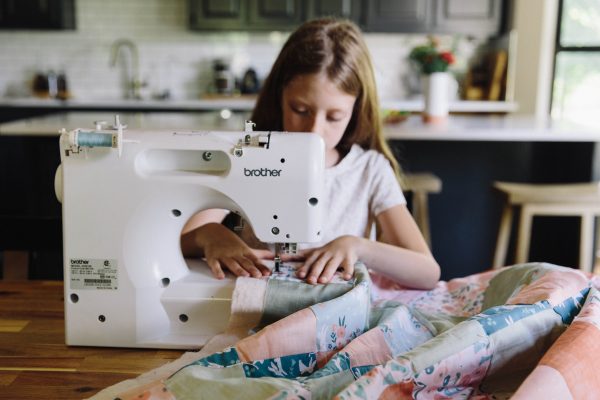
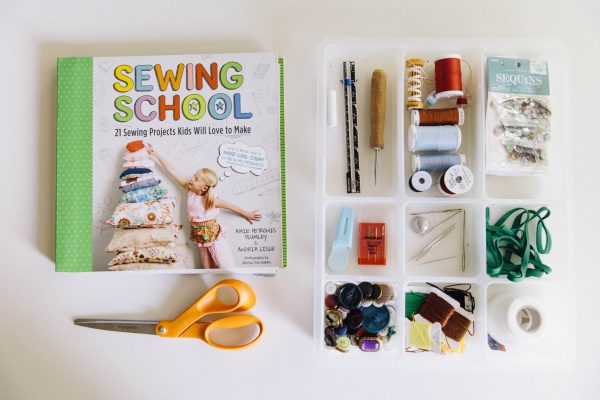
My youngest daughter crossed a big milestone and learned to read this year! She’s written a twenty-five page book which we are working on typing so that we can “publish” it and put it in our bookshelves alongside her favorite picture books.
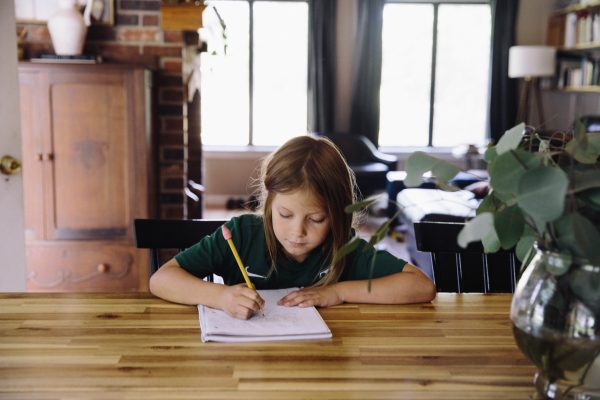
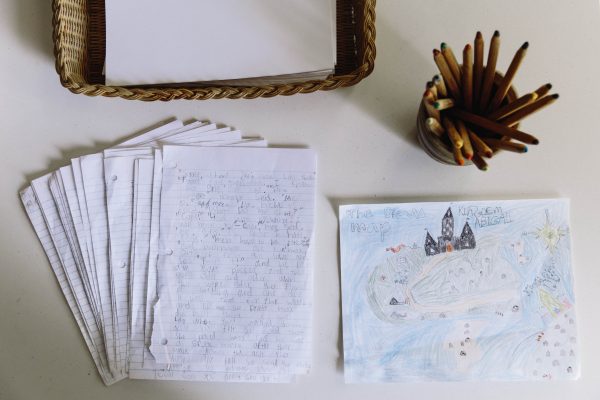
Together we learned about sea life and rivers, read dozens of books, listened to history podcasts, baked, wrote stories and did endless handcrafts. We played Bananagrams and math games. My older two also asked to learn how to type and can now type over thirty words per minute. All of them spent weeks making holiday coloring pages and hair accessories for the Christmas fair at co-op.
As an unschooling project in the spring, the girls raised six baby chicks. They learned everything they could about raising chickens from breeds to feeding and care. I gave the project to them and they owned it! I have yet to feed or pick up a chicken four months later. (Remember, I’m Mr. MacGregor. I do the garden and chase small rabbits with hoes.) The girls also learned some construction by helping David build the coop. They know so much about keeping chickens now, I just ask them when I have questions!
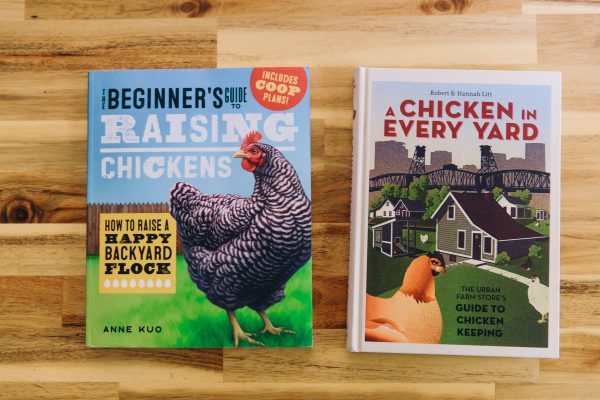
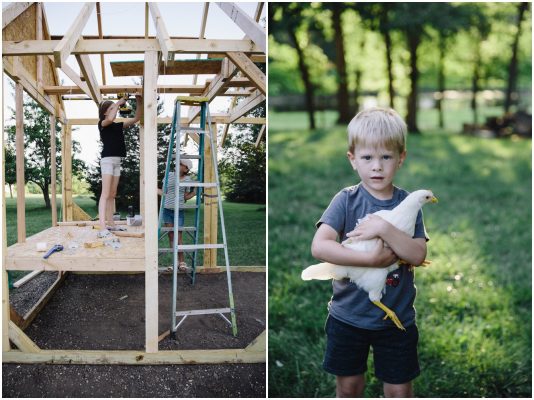
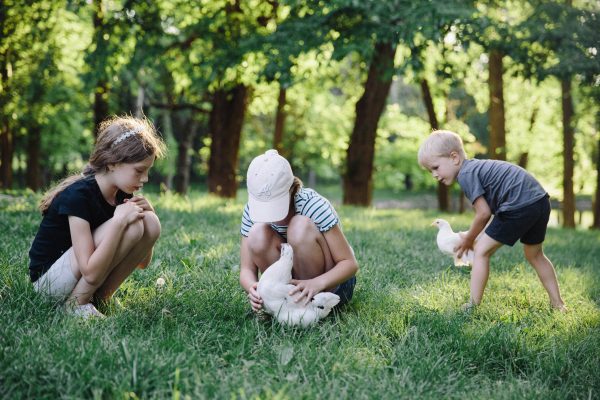
Then this summer we also took a road trip to the Grand Canyon and the California coast, so there was a lot of real life learning about geology, geography and ocean life.



Finally, of course, we planted a garden and have enjoyed harvesting all the veggies and flowers this summer.
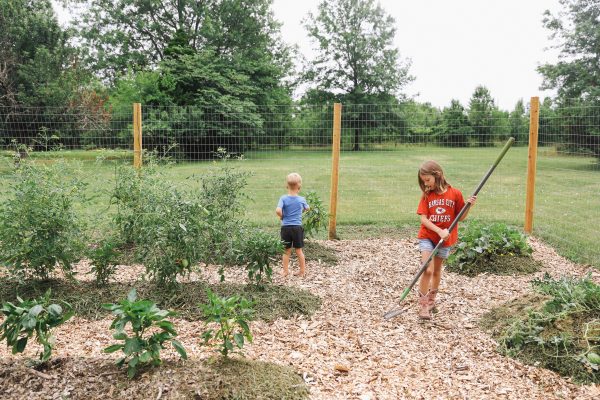
Formal/Structured Learning
Even though we unschool, we still keep a rhythm of math, language arts and reading aloud. (This is self-paced) Though I did less reading aloud than we have in years past, everyone fell right into their own routines of independent math and writing. During the times that I was able to read aloud, we used the book list from the Kind Kingdom and read through about half of the Chronicles of Narnia. I also simply checked out non fiction books based on what everyone was interested in learning.
My youngest learned to read this year just before her eighth birthday. She has had the least amount of formal school, but loves to direct her own learning. She completed up to book four of Explode the Code phonics books on her own and did math a few times a week with me. It’s interesting to see how she approaches learning since I’ve required to the least from her in terms of formal school work.
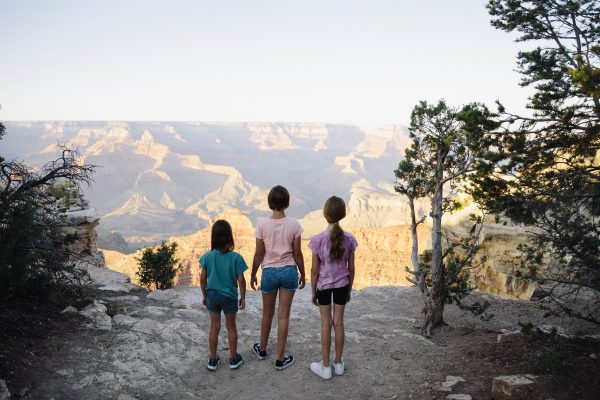
My older two girls do Teaching Textbooks for math. A few times a week I require some kind of writing or language arts. They can choose from copy work, a spelling workbook or any other form of writing they’d like to do. Letters, story writing and lists are popular choices! We do have a spelling workbook that they can use, but other than that we didn’t use a curriculum for language arts this year.
They generally liked to do these things right when they woke up in the morning because they were allowed to play a computer game once math was done. We saved read aloud and project times for Levi’s rest times. He still disrupts read aloud with truck noises and after four years I’m finally starting to accept that this is our life!
One of my kids who struggles with memorization was hitting a wall with her times tables, so we paused her math and spent six weeks shoring up her multiplication facts with a lovely supplementary curriculum called Multiplication Facts that Stick, by Kate Snow. She loved the game-based format and I enjoyed the low-prep activities!
The co-op that we attended helped fill in a lot of things that I wished I could have done this year but couldn’t, like crafts and holiday activities.
I kept a (rather inconsistent) log of these things but was still pleasantly surprised at how many hours of learning we did.
The Thriving
I wish I could tell you we had a perfectly ordered slow-living schedule where we savored every moment together and had watertight routines.
We did not. We ran hither and yon, putting out fires and holding it together as best we could. How did it all work? How did we do all the things in the midst of unpredictability and change?

Looking back, we relied on our systems, or what I like to call my “forever plan”. Things in our homeschool are set up so that they can run on autopilot. Some of the systems that saved us were our laundry routine, chore system, meal planning matrix, four way school day, planning schema and weekly reset. Those frameworks enabled me to look past the mess, focus on the essentials, and create room for the most important things.
Knowing our core values and big vision also helped to keep me grounded and away from the perennial “Am I doing enough?” question. I was able to stay focused on the things that mattered to us, even when our days didn’t look like anyone else’s I saw on Instagram. Creativity, faith-based instruction, entrepreneurship and self-directed learning stayed a priority even in the disarray.
Like my garden, it was messy but all the essential things for explosive growth were there anyways.
If you had a crazy year or are coming up on a time of big transition I want you to know that your kids can still thrive in an imperfect homeschool. You don’t have to have a perfectly consistent writing practice or continual slow mornings with fresh blueberry muffins to give your kids a quality learning experience.
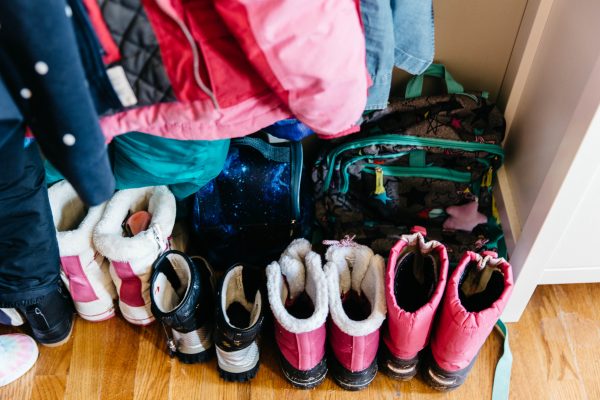

Good things can still grow in messy gardens. The piles of cucumbers on my counter top are proof of that.
Notes
Unschooling is our main philosophy (more about that here), but we utilize some Charlotte Mason principles to enrich our home and equip our kids to self-educate.
Each year I choose a literature-based curriculum or book list along with one math and one language arts program. From about September to about June, we do short lessons, projects and read alouds with these curriculums. The remainder of our time is spent on interest-led learning. I plan our year without a calendar or planner using a simple homeschool planning schema.
Resources
Here are the formal resources we used this year:
Math U See
Teaching Textbooks
Mutliplication Facts that Stick
The Kind Kingdom book list (Get 20% off when you use code PEACEFUL through my link!)
Real Cool History for Kids podcast
You can find all of our favorite homeschool supplies listed here in our Amazon Storefront!
This post contains affiliate links. Shopping our links helps me keep creating helpful content like this!
For candid thoughts on faith, motherhood and homeschooling, subscribe to my Substack newsletter!